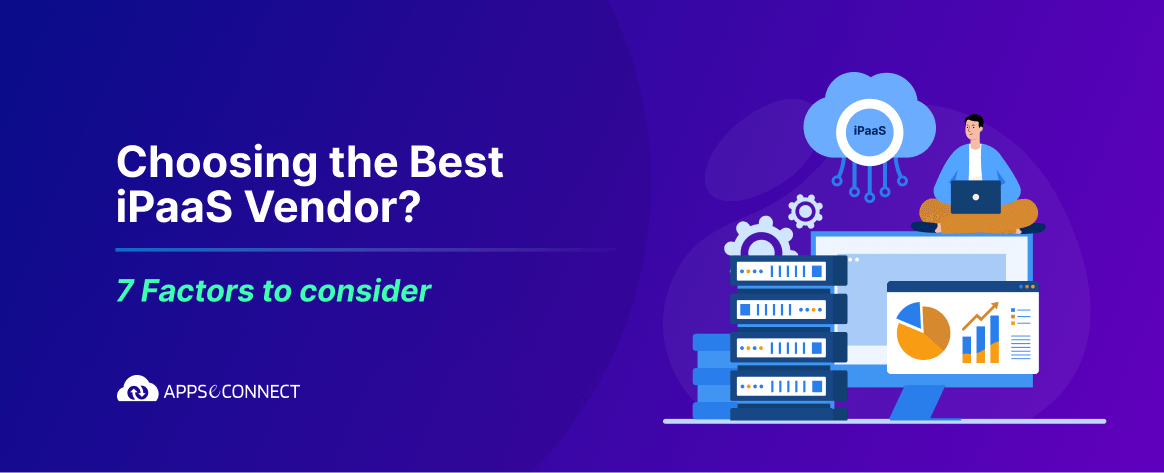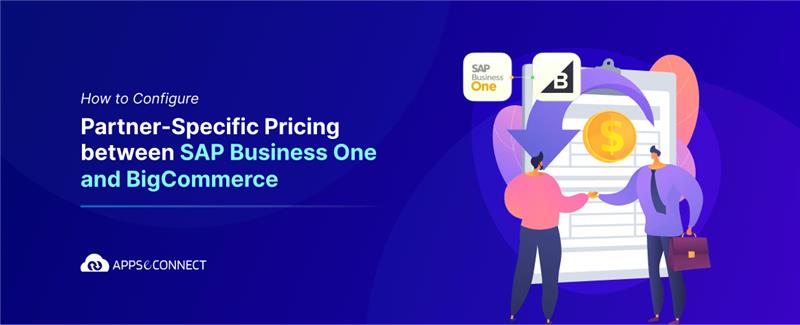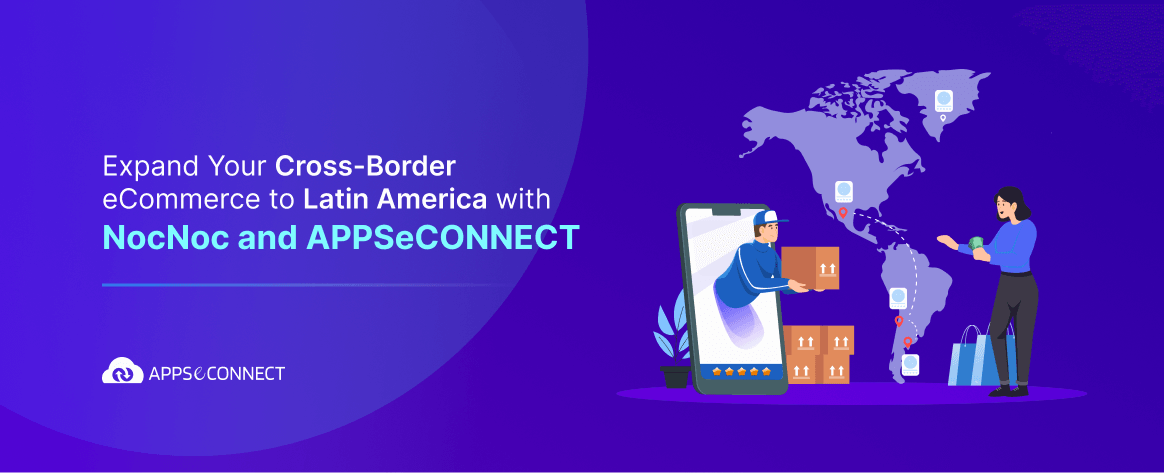In 2022, US-based sellers alone sold a staggering 4.1 billion products globally through their Amazon marketplace channel (source: https://sell.amazon.com/blog/amazon-stats.) With digitalization and ease of execution, sellers have quickly recognized the vital need and significance of this new sales channel and are now emphasizing the need for efficient and effective operations management for profitability and success. It is crucial for Amazon sellers to not only sell their products online but also to manage and automate their supply chain process through Amazon Seller Central integration and Amazon EDI integration to scale further in the future and cater to the global market. Amazon integration with other business applications facilitates the free flow of data between multiple systems, offering a seamless experience. Thus, proper Amazon Seller Central API Integration is a must-have for any aspiring marketplace seller as it helps define the overall business strategy for the organization.

The need for efficient application integration is paramount for Amazon sellers working with ERPs such as SAP Business One, QuickBooks, etc. to support various scenarios like Fulfilled by Amazon (FBA), Fulfilled by Merchant (FBM), Vendor Central module, etc. Having understood this aspect, sellers are now eager to adopt cohesive integration methods to streamline their business ecosystem.
The following article will explore the best practices and optimal methods for achieving seamless Amazon Seller Central Integration with ERP systems and allowing merchants to maximize their sales and revenues. Drawing insights from more than 50 mid-sized and enterprise integration projects, this guide will help sellers navigate the Amazon marketplace with key learnings and best practices that businesses need. Join me as I share insights from my personal experiences, address frequently asked questions and get you to think about the not-so-obvious aspects of Amazon Seller Central Integration.
Initiating Amazon and Applying for Amazon Selling Partner API Developer Access
Compliance with Amazon’s strict guidelines and quality checks is a prerequisite for developing integrations with the platform. While securing this approval may take anywhere between 3-6 months and cause potential anxiety, the true reason why Amazon implements this stringent process is to ascertain the developer’s proficiency in navigating the complexities of calling APIs.
To manage throttling and enhance performance efficiency, Amazon Seller Central APIs are segregated into a series of methods. Some of these responses are asynchronous, necessitating the submission of the “Feed ID”, which is then used in the subsequent API call to retrieve the exact data.

If you do not have an approved Amazon Developer Account or prefer to avoid the extended approval wait, consider exploring readymade Amazon Seller Central integration packages by an approved developer like APPSeCONNECT. This eliminates the need for users to navigate through the learning curve associated with API structures for writing and maintaining custom integrations.
Approaches for Amazon Seller Central Integration
When it comes to Amazon Seller Central integration, two distinct approaches – namely Amazon EDI integration and Amazon Seller Central API integration – come into play, each with its own advantages and setbacks. Let’s discuss these below.

Amazon Seller Central EDI integration
Employing EDI (Electronic Data Exchange) to Amazon Seller Central with other applications involves the consumption of APIs on the Amazon side and consolidating them into EDI structures. Several financial software solutions are equipped with the capabilities to process EDI files. The following are some EDI standards related to Amazon integrations:
- 850: Amazon Order
- 856: Shipping Notification (FBM)
- 810: Invoices
- 812: Credit Debit Memo
Leveraging Amazon EDI integration for Amazon Seller Central has the following advantages.
- Batch processing of transactions, meaning less load on in-house application
- Processing of EDI messages already in-built with most enterprise software
- Ease and convenience of monitoring, especially if EDI is already being used for other integrations and you have internal resources who monitor the EDI messages.
Limitations of using EDI for Amazon Seller Central Integration
- The information and data exchange occurs in batches rather than in real-time.
- Often, a single data issue can lead to the failure in the processing of an entire batch.
- Converting information and data from Amazon into EDI-compatible formats requires intense manipulation
- Maintaining this integration amid the changes in Amazon API fields can be a demanding and daunting task.
Amazon Seller Central API Integration
Utilizing Amazon Seller Central API methods enables users to retrieve or push information directly into their ERP system and prevent the loss of any data. However, to get there, users would need to code and implement custom program changes and customize the software. This is necessary due to the stark differences between Amazon’s data model and meta-field definitions and those of the ERP systems.
Leveraging API integration for Amazon Seller Central has the following advantages.
- Real-time information and data exchange with Amazon
- Easier and simplified management of new API versions and maintaining solution
- Elimination of the need for file manipulation
- Easier error handling by identifying and addressing specific erroneous transactions.
Limitations of using API Integration for Amazon Seller Central
- Intense strain on the financial applications to process individual or small batches of API packets
- Requires custom integration components on the ERP side
- Needs better handling of Amazon API throttling limits.
Looking to get started with Amazon Seller Central Integrations to automate the business operations in your organization? Seamlessly integrate and automate your Amazon store with other applications under a single, intelligent, and secure Business Process Automation platform through APPSeCONNECT’s robust integration packages and achieve exponential business growth.
Why Using iPaaS for Amazon Seller Central Integration is a Smart Move
Having considered the advantages and drawbacks of the two abovementioned approaches, it is now time to explore a method that allows for API-based integrations without burdening or extensively customizing the ERP application. This is where leveraging an Integration Platform as a Service (iPaaS) comes into play to handle all the bulk transactions.
By correctly utilizing the APIs on the Amazon side and standard ERP integration methods, an iPaaS significantly reduces the extent of ERP customization required for streamlined integration. This approach introduces elasticity and sophistication to the integration process and helps in efficiently managing large volumes of information without exceeding the Amazon API limits. Simultaneously, it also manages and processes information in batches, avoiding overloading the ERP application. Furthermore, iPaaS solutions also streamline error monitoring efforts and substantially reduce maintenance requirements.
Key Integration Aspects of Amazon Seller Central Integration that Impact Profitability
I would like to share recent interactions I had with customers and prospects that underscore the significance of Amazon Integration.
Let me begin with a leading confectionery brand in Europe. Their North American division decided to sell on Amazon using the FBA model. However, after a few months, they encountered difficulties in reconciling inventory and finance. Unable to track their bottom line effectively, they were forced to suspend their sales on Amazon.
Now, let’s talk about another company in the nutrition and supplements industry. Uncertain about their ability to sell on Amazon successfully without access to key information within the back-end systems, this company was contemplating outsourcing the entire operation to a third party.

These examples emphasize and highlight the critical importance of Amazon Seller Central Integrations for businesses. It enables seamless inventory management, financial reconciliation, and overall operational efficiency, ensuring sustainable and perpetual success on the platform.
Across the integration I have been involved in, these 3 key aspects are the most crucial ones:
Stock Reconciliation
Both FBA and FBM scenarios have their own applicability, driven by varied reasons. In the FBM model, inventory shortages in Amazon Seller Central can lead to potential sales losses, even if the items or products are in stock. Conversely, displaying more stock than the actual numbers can put businesses in a predicament where they cannot fulfill an Amazon order, resulting in a negative impact on the Amazon rating.
Under the FBA model, however, the objective differs – although the Amazon seller is not responsible for fulfilling orders, reconciling shipped stock with what Amazon has received is essential. Failing to do so can have a severely negative impact on any Amazon business and its profitability, as any error or discrepancies can erode the profits.
Shipping Updates
For merchants operating under the FBM model, the responsibility of shipping products directly to the customer is expected. Timely shipping is crucial, ideally on the same day as the order is placed. Once this package has been sent, tracking information is promptly updated on the Amazon account. Delays in shipping and handling not only result in lower customer satisfaction but also negatively impact the product rankings in the search results.
Financial Reconciliation
To accurately assess the net earnings from Amazon, it is crucial for businesses to monitor their bottom line after deducting all the fees. Efficiently managing this process across hundreds and thousands of orders every two weeks demands a robust mechanism. By integrating Amazon with a back-end ERP solution, organizations can ensure that the amount paid by Amazon aligns with the financial records, providing complete and clear visibility. This visibility serves as a foundation for strategic decision-making regarding pricing and promotions.
Key Insights into Some ERP Integrations by APPSeCONNECT
Different ERPs have varying levels of platform features and integration capabilities. When designing APPSeCONNECT, we focused more on maximizing integration and automation without complicating or customizing the ERP extensively. Below are some of the most proven and time-tested Amazon and ERP integrations by APPSeCONNECT that businesses around the world use.
SAP S/4HANA and Amazon Seller Central Integration
SAP S/4HANA is an enterprise-grade ERP solution by SAP that can be easily and seamlessly integrated with Amazon Seller Central via APPSeCONNECT, by leveraging advanced features such as consignment processing, condition technique and ALE distribution models. SAP S/4HANA has built-in stock/inventory and financial reconciliation reports, that help retrieve information and data from Amazon and identify any discrepancies. This streamlined and straightforward SAP S/4HANA and Amazon Seller Central integration further reduces the need for extensive manual validation and effort during the month-end closing.
SAP Business One and Amazon Seller Central Integration
SAP also offers an ERP solution specifically designed for small and mid-sized companies called SAP Business One, which provides advanced platform capabilities and allows seamless integration through HANA API or Service Layer. With APPSeCONNECT, organizations can easily connect their Amazon Seller Central with SAP Business One and effectively manage their inventory, orders, customers and financial reconciliation data, enabling profitability in the marketplace operations.
QuickBooks and Amazon Seller Central Integration
Although QuickBooks offers a limited solution for small organizations, integrating Amazon Orders with QuickBooks can enable businesses to efficiently manage their financial information within the platform. The seamless QuickBooks and Amazon Seller Central integration by APPSeCONNECT promises to improve the efficiency of processes and streamline overall operations. This, in turn, empowers organizations to make informed financial decisions with much more ease, authority and confidence. It is, however, advisable for growing organizations who use QuickBooks to shift their back-end system to SAP Business One as they provide a much more holistic and cohesive control over the entire business.
Read here to compare SAP Business One with QuickBooks.
Conclusion and Further Read
When starting an integration for Amazon Seller Central, it is often more convenient to choose a platform that already supports integration and is a scalable solution for businesses. This support for integration also eliminates the need for companies to apply for Amazon Partner API and create custom projects from scratch. Seamless integration between Amazon and other business applications ensures a smoother workflow while maintaining the intended platform functionality. Efficient data and information exchange improves operational efficiency and contributes to the organization’s profitability.
There are certain crucial aspects of Amazon Seller Central integration that must be carefully considered before implementation to ensure scalability while also adhering to the Amazon API limits. It is important to factor in the inherent capabilities of the ERP solution and maintain realistic expectations as extensive customization on the ERP can significantly complicate long-term solution maintenance. An Integration Platform as a Service (iPaaS) promises to enhance and streamline the integration journey for organizations, offering a seamless and automated experience. By integrating your ERP with Amazon, an iPaaS would help you skyrocket your business to perpetual growth and achieve huge success.
Best of luck with your marketplace integration initiative.





















